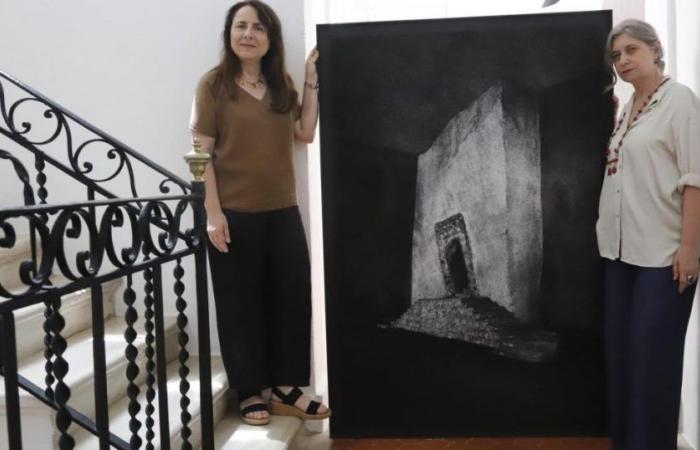Can Alberti 1740, in Maó, hosts the exhibition “The murmurs of the stones” with a total of 16 works, between photographs and drawingsby the photographer and National Photography Prize winner Isabel Muñoz, the Galician photographer Nicolás Cambarro and the Valencian draftsman and painter Regina Quesada, the latter two resident artists of the Casa de Velázquez in Madrid, the institution that organizes the exhibition.
The initiative of Can Alberti 1740 and the declaration at the end of 2023 of the Talayotic Menorca as a World Heritage Site by UNESCO together with the confluence of art and archaeology in the artistic proposals by Isabel Muñoz, Nicolás Cambarro and Regina Quesada have illuminated the exhibition, in which the dialogue between artists and stones stands out, says Claude Bussac, who has been the director of the artistic studios at the Casa de Velázquez in Madrid since last September.
The exhibition brings together the new photographs by Isabel Muñoz at the Gobekli Tepe site in Turkey, which is 11,600 years old, the four images of the subways of Naples and Rome captured by Nicolás Cambarro and the three stone drawings made by Regina Quesada “It seemed to me that the three of them had this relationship with what the stones murmur and with a very different artistic expressiontwo different generations, that of the two young residents of the Casa de Velázquez and Isabel who has not been a resident but this year she has been godmother of the institution. We thought there was a very interesting dialogue that shows us how there is a lot of relationship between archaeology, the scientific part, and everything that an artist can contribute. teaching us to see things differently,” says Bussac.
The exhibition can be visited until July 7. | Gemma Andreu
Thus, Bussac emphasizes that Isabel Muñoz provides with her photographs of the archaeological site the vision that the artists who built the Turkish sanctuary may have had, “since she works at night and gives us the image of what the people there saw then, something that An archaeologist never gives, he complements himself very well. Suddenly you find yourself in front of Isabel’s photos that we can see in the exhibition seeing the same thing as people 11,600 years agoonly an artist can convey this. Then I associated her with two younger artists, Nicolás and Regina, because they have also worked on what the stones could communicate to us, because it is a bit of what it transmits for the memory and understanding of where we come from, between the spiritual and the real,” she emphasizes.
Institution
The director of the Casa de Velázquez in Madrid, Nancy Berthier, has pointed out that the Casa de Velázquez is a French institution created in 1928 and located in Madrid, which is part of a network of French institutions abroad with a tradition in the field of art that dates back to Louis XIV.
The Casa de Velázquez was founded by the French archaeologist Pierre Paris, a specialist in Greek archaeology and later in Iberian art. Its peculiarity is that It is also a research centre that houses high-level researchers. “They come for research stays and also a residence that houses a community of artists for artistic research, we have a dual orientation between scientific research in human and social sciences and artistic creation, which was built and conceived on purpose on land granted to us by King Alfonso XIII in the university city of Madrid,” he emphasizes.


